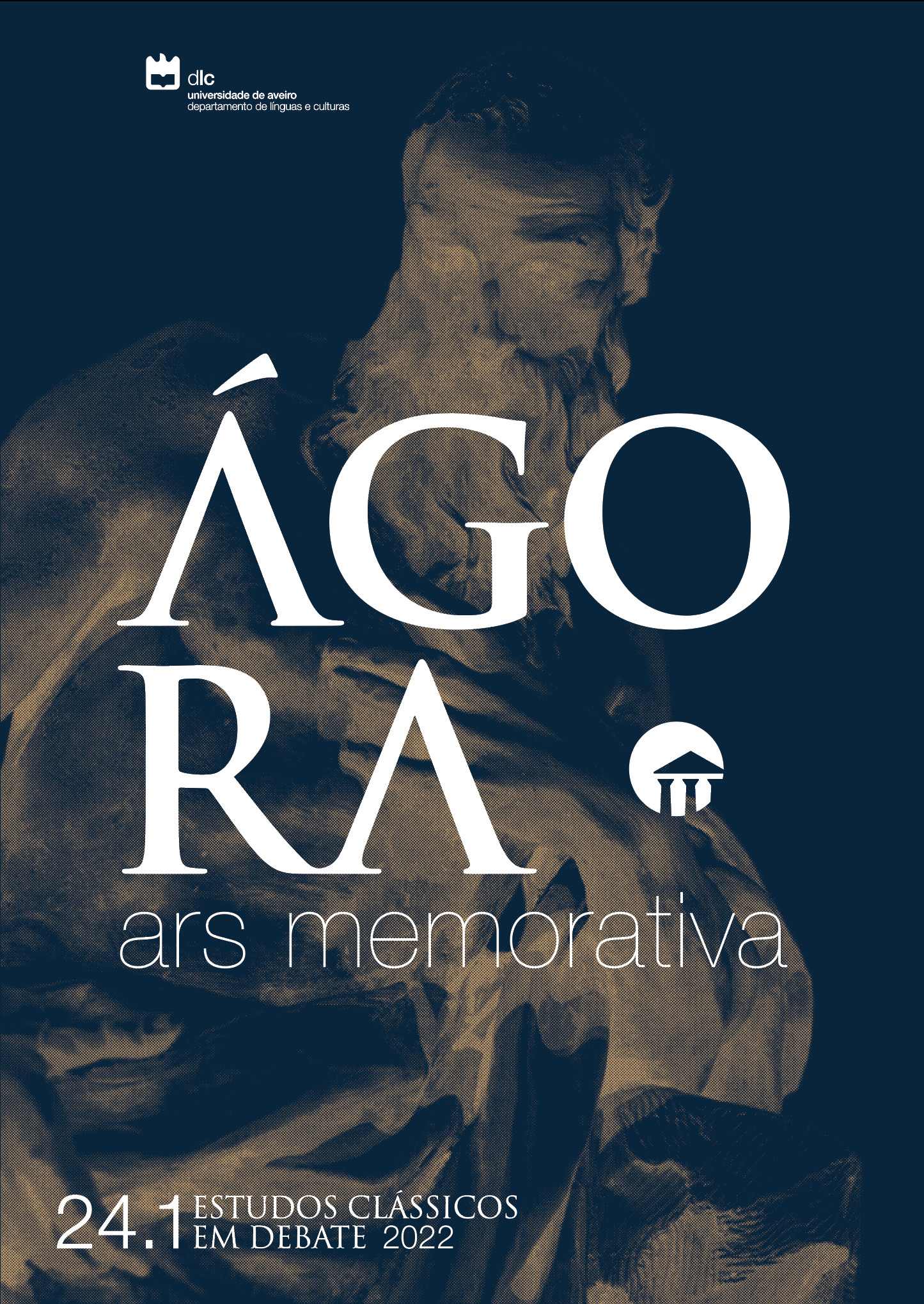Habituation and wonder: embodied knowledge in Renaissance Italy’s memory
Abstract
Renaissance techniques of memorization utilize the body, intentionally and precisely, to enhance memorization. The analysis of three Italian memory manuals from the late 1500 highlights an impressive expertise of the unique possibilities offered by an embodied acquisition of knowledge. Some concepts from current cognitive theory will help appreciate the efficacy and complexity of such techniques. This interdisciplinary reflection contributes to the delineation of a pre-Cartesian conception of human cognition.
Downloads
References
Primary sources:
DELLA PORTA, G. (aut.), SIRRI, R. (cur.) (1996), Ars reminiscendi; aggiunta L'arte del ricordare tradotta da Dorandino Falcone da Gioia. Napoli, Edizioni scienti-fiche italiane.
MAGGI, A. (cur.) (2012), Giovan Battista Della Porta, The Art of Remembering
— L’arte del ricordare. Ravenna, Longo.
DOLCE, L. (aut.), TORRE, A. (cur.) (2001), Dialogo del modo di accrescere e conser-var la memoria. Pisa, SNS Edizioni.
GESUALDO, F. (1592). Plutosofia: nella quale si spiega l’Arte della Memoria con altre cose notabili pertinenti, tanto alla Memoria Naturale, quanto all’Artificiale. Padua, Megietti.
Secondary sources:
ANDERSON, M. (2015), The Renaissance Extended Mind. Springer.
BAUM, J.M. (2019), Reformation of the Senses: The Paradox of Religious Belief and Practice in Germany. Urbana (IL), University of Illinois Press.
BOLZONI, L. (2001), The Gallery of Memory: Literary and Iconographic Models in the Age of the Printing Press. Toronto, University Of Toronto Press.
BOLZONI, L. (ed.) (1991). Giulio Camillo, L’Idea del Theatro. Palermo, Sellerio.
BOLZONI, L. (ed.) (2004), «Con parola brieve e con figura». Emblemi e imprese fra antico e moderno. Lucca, Maria Pacini Fazzi.
BLOCH, D. (2007), Aristotle on Memory and Recollection: Text, Translation, Inter-pretation, and Reception in Western Scholasticism. Leiden – Boston, Brill.
BANKS, K. & CHESTERS, T. (eds.) (2018), Movement in Renaissance Literature: Exploring Kinesic Intelligence. London, Palgrave Macmillan.
CARRUTHERS, M. (1998), in The Craft of Thought: Meditation, Rhetoric, and the Making of Images, 400-1200. Cambridge, Cambridge UP.
CARRUTHERS, M. & ZIOLKOWSKI, J. M. (eds.) (2002), The Medieval Craft of Memory: An Anthology of Texts and Pictures. Philadelphia, University of Pennsylvania Press.
CEVOLINI, A. (ed.) (2016), Forgetting Machines: Knowledge Management Evolu-tion in Early Modern Europe. Leiden, Brill.
COX, V. & WARD, J. O. (eds.) (2006), The Rhetoric of Cicero in Its Medieval and Early Renaissance Commentary Tradition. Leiden, Brill.
DECKARD, M. F. & LOSONCZI, P. (eds.) (2010), Philosophy Begins in Wonder: An Introduction to Early Modern Philosophy, Theology, and Science. Eugene, Pickwick.
DEW, I. T. Z. & CABEZA, R. (2011), “The porous boundaries between explicit and implicit memory: behavioral and neural evidence”: Annals of the New York Academy of Sciences 1224 (2011) 174-190.
ENENKEL, K. A. E. & NEUBNER, W. (eds.) (2005), Cognition And The Book: Typologies Of Formal Organisation Of Knowledge In The Printed Book Of The Early Modern Period. Leiden, BRILL.
IGLESIAS-CRESPO, C. (2022a), “La metarretórica cognitiva aristotélica y su in-fluencia sobre el tratamiento de la memoria en la Rhetorica ad Herennium”: Rhetorica: A Journal of the History of Rhetoric 40.1 (2022) 1-22.
IGLESIAS-CRESPO, C. (2022b), “Staging the Emotions in Giulio Camillo’s Theatre: Syncretism, Embodied Cognition and the Arts of Memory”: Ágora.Estudos Clássicos em Debate 25 (2022) 83-103.
JOHNSON, L., SUTTON, J. & TRIBBLE, E. (2014), Embodied Cognition and Shakes-peare's Theatre: The Early Modern Body-Mind. New York, Routledge.
KVICALOVA, A. (2019), Listening and Knowledge in Reformation Europe: Hearing, Speaking and Remembering in Calvin's Geneva (133-160). Cham, Palgrave Macmillan.
SHAPIRO, L. (ed.) (2014), The Routledge Handbook of Embodied Cognition. New York, Routledge.
SOSSIN, W. et alii (eds.) (2008), Essence of Memory. Amsterdam, Elsevier.
SPARROW, T. & HUTCHINSON, A. (eds.) (2013), A History of Habit: From Aristotle to Bourdieu. Lanham, Lexington Books.
SPENCE, K. W. & SPENCE, J. T. (eds.) (1968), The psychology of learning and moti-vation: Advances in research and theory. (Vol. 2). New York, Academic Press.
SPOLSKY, E. (2007), Word vs. Image: Cognitive Hunger in Shakespeare's England, New York, Palgrave-St. Martin’s Press.
TRIBBLE, E. & KEENE, N. (2011), Cognitive Ecologies and the History of Remem-bering Religion, Education and Memory in Early Modern England. London, Palgrave Macmillan.
ROSSI, P. (1960), Clavis universalis. Arti della memoria e logica combinatoria da Lullo a Leibniz. Milano-Napoli, Ricciardi.
VELMANS, M. & SCHNEIDER, S. (eds) (2007), The Blackwell Companion to Consciousness. New York, Wiley-Blackwell.
VIDAL, F. (2011), The Sciences of the Soul: The Early Modern Origins of Psychology. Chicago, University of Chicago Press.










